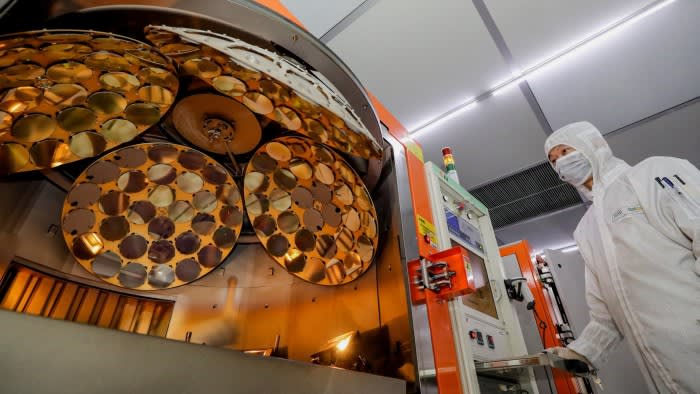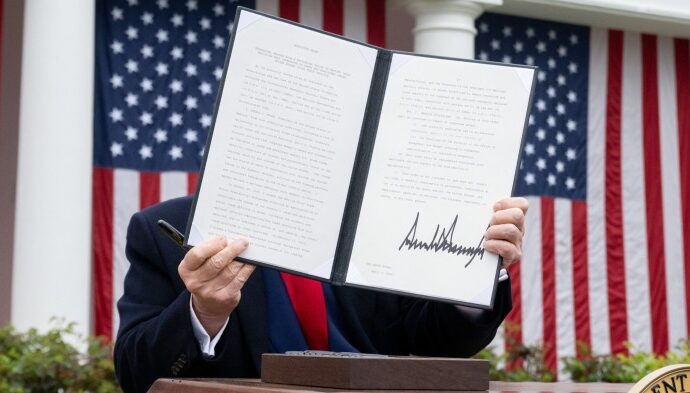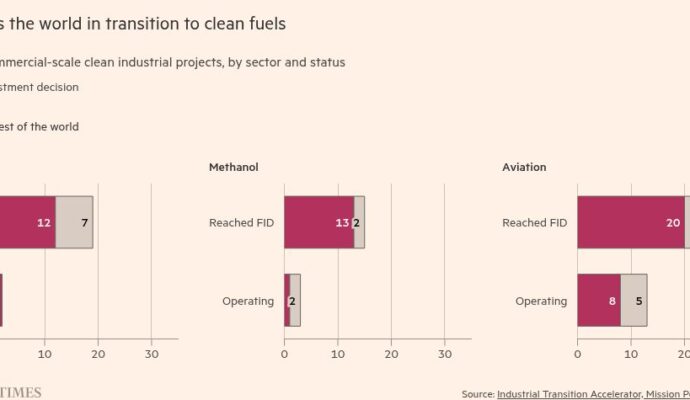
Unlock the White House Watch newsletter for free
Your guide to what Trump’s second term means for Washington, business and the world
The writer is a distinguished visiting fellow at the Hoover Institution. He previously served as then US Senate majority leader Chuck Schumer’s national security adviser
While Washington fixates on advanced AI semiconductors, Beijing is quietly cornering the market in so-called foundational chips that power everything from cars to medical devices to defence systems. American supply chain security potentially hangs on the decisions taken in response to pending investigations by the Office of the United States Trade Representative and the Department of Commerce into China’s bid for dominance of the sector.
The numbers are stark. China already accounts for close to 40 per cent of global chip capacity — a trajectory that points to even greater dominance by the late 2020s. Yet this crisis remains fatally overshadowed by the more glamorous race for AI supremacy.
Applied to chips, the misleading terms “legacy” or “mature” connote obsolescence for what are, in fact, indispensable and innovative components. Foundational chips — semiconductors fabricated on process nodes of 28 nanometres or larger — are digital workhorses.
Their importance stems from sheer ubiquity. Any electronic device with an on-off switch almost certainly contains them. They form the backbone of critical national infrastructure, managing power distribution and telecommunications networks.
For the Pentagon, this represents a profound vulnerability. While advanced semiconductors are the “brain” of modern military systems, foundational chips are the “fist” in weapons deployed in the field. F-16 fighter jets, Patriot missiles and the Javelin anti-tank missiles defending Ukraine all rely on foundational chips. Ceding control of their supply chain means ceding control of the American arsenal itself.
Alarmingly, this threat is already apparent on Ukrainian battlefields. China now accounts for approximately 90 per cent of Russia’s imports of “high priority” dual-use goods, with Chinese semiconductors identified in Russian drones, missiles and tanks.
Meanwhile, America focuses primarily on the cutting edge. The Chips and Science Act was vital legislation — when it passed, there was zero capacity for leading-edge chip manufacturing in the US, and the bill is bending the curve. Of $39bn in manufacturing grants, approximately $28bn supports leading-edge facilities, while far less targets foundational chips.
Americans should be proud of and confident in our extraordinary innovation and manufacturing capabilities. These capabilities, however, don’t run on fairy dust — they run on money. Because of China’s massive state subsidies, the traditional invisible hand cannot be counted on exclusively.
The pending US investigations are therefore pivotal. The Office of the USTR and the commerce secretary are analysing whether China’s practices constitute actionable trade violations and a threat to national security.
The investigation must conclude with decisive action, but tariffs alone won’t suffice. Conventional thinking says targeted tariffs can nudge supply chains, yet China’s sheer scale demands more.
A recent commerce department survey found that Chinese-made chips were “pervasive” and about half of US firms couldn’t even tell if they used them. This situation is untenable. Washington should adopt a “know your chip” requirement — the semiconductor equivalent of financial know-your-customer rules — forcing companies to map and disclose their supply chains. Industrial policy may discomfort free-market purists, but it is essential to restore visibility, build capacity and strengthen the defence base.
Perhaps most dangerously, US dependence on Chinese chips erodes the strategic logic that has maintained peace across the Taiwan Strait. For decades, “mutually assured economic destruction” was a powerful deterrent; China’s deep integration into global supply chains made conflict economically prohibitive. But as China pursues self-sufficiency in foundational chips while the west depends more on Chinese production, this calculus weakens.
If the foundational infrastructure of our economy and core components of our military arsenal are built with switches controlled by our chief adversary, the contest for AI leadership becomes irrelevant.
Securing resilient domestic and allied supply chains for foundational semiconductors is not a legacy issue to address after more exotic challenges. It is the essential, urgent, non-negotiable national security imperative of our time. The USTR and commerce department investigations offer a final chance to act decisively. Failure to do so would be catastrophic, transforming American strength into Chinese leverage with every car, missile and medical device we build.


